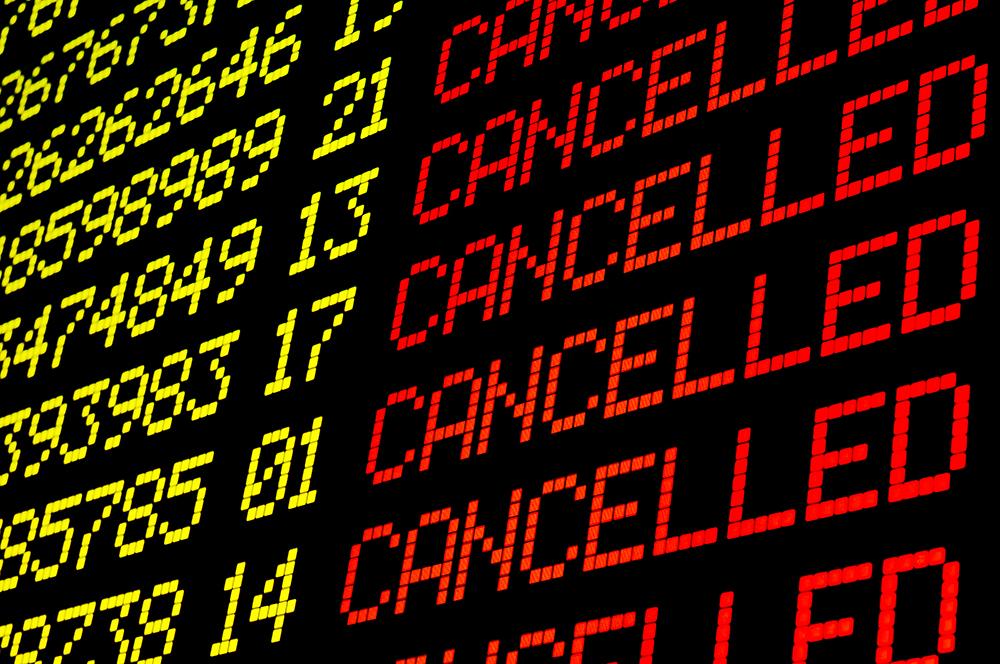Opinion: What Airlines Can Learn From Recent IT Failures

Airline IT systems have been in the news, and not for good reason. Most notably, Southwest Airlines grabbed all the wrong headlines for its system-wide failure caused by its outdated flight scheduling software. It is estimated that the mishap will cost the airline between $725-$825 million.
And unfortunately, Southwest is not alone. In the recent past, we have witnessed IT meltdowns from airlines spanning the globe and, most recently, the FAA encountered system failures, causing significant disruptions and costing hundreds of millions of dollars.

What does all of this unfortunate news tell us as an industry? That we need to learn from mistakes, and actions need to be taken by airline executives so these costly mishaps do not happen again.
Why Do These System Failures Happen?
Before we dive into exactly how airline teams can make these changes, we need to first dive into why these system failures are happening.
It starts with airlines relying on decades-old IT systems and accumulating a great deal of technical debt. The irony here is that airlines stick with their legacy systems because of fear of a disruption occurring from a systems overhaul, only to be met with severe disruptions caused because of their own technical debt. So, their own risk aversion actually creates more risk—a real Catch-22!
Diving deeper into the organizational psychology of the situation, we see that there is further risk aversion from a self-preservation standpoint. For many executives and leaders, the risk of spearheading a transformational project and having it fail (in terms of both time and money costs and, even worse, operational disruptions) far outweighs the potential reward of becoming an organizational pioneer by implementing new technologies.
As much as airline executives need to change their IT systems, they first need to change their hearts and minds before the industry can earnestly move forward. A different set of incentives— either internal or external—could become the change agent that is needed.
The first step will be for executives to stop looking at technological change as a risk and instead look at it as an investment. The best part about this investment is that it not only comes with eventual financial gains, but also provides the versatility and flexibility to set up your organization for long-term success brought on from permanent efficiency gains. The only real risk is the risk of standing pat and doing nothing.
Liliana Bocanegra, technical procurement director at Avianca, commented: “Technology investment is not an option; it is a must for airlines. The pandemic demonstrated that technological advancement is the best way to optimize the process and adapt to what the customer wants. For example, new supply chain technologies are excellent for communicating with suppliers, having prices available online, and improving inventory levels. On the maintenance side, big data has demonstrated significant results on predictive maintenance and AOG mitigation.”
This risk has been made ever-so-clear, unfortunately, from the ongoing system failures of airlines and airline-related organizations. The problem with simply maintaining what is there is that airlines actually are not even able to do that. This is because their systems are so old that the people with the knowledge and ability to maintain and update their systems are retiring from the workforce.
On the other hand, airlines can mitigate this risk by investing in software-as-a-service (SaaS) products, which are continually maintained, updated and improved. These out-of-the-box technologies evolve and grow along with your business and industry to ensure you meet your business objective—because if they don’t, the competition is so fierce someone else will.
“As far as investing in technology in the supply chain, I think you get 10 times back very easily,” said Patrick Coval, innovation and product development design leader at SkyThread during a recent webinar. “If you put $100,000 into technology, you'll get $1 million back.”
An industry-wide mindset shift needs to occur from one of survival and maintaining the status quo to one of innovation and excellence.
How Can Airlines Change?
Move away from the psychological aspect and focusing on the tactical ways airlines can improve their systems, it is all about mitigating risks. How can we do that when it comes to implementing new technology?
The first step and the foundation for everything is selecting a good tech vendor. What constitutes a good vendor? It is best to look for the following criteria:
Flexibility: The vendor is able to both carry out an implementation and deliver its products and services around your unique business rules. This includes being able to deliver a hassle and risk-free trial without disrupting current operations.
Good communication and collaboration: In order to execute any kind of effective implementation, there must be good communication between the involved parties, or else it is doomed to fail. During the process you will almost certainly run into unexpected challenges, and this is where ongoing collaboration will ensure the process remains smooth.
Accountability: IT issues have severe consequences. This is why you need an accountable tech vendor that not only accepts responsibility, but also works proactively to prevent any problems from occurring. When they occur (which is bound to happen on some level), they diligently rectify the problem and mitigate any disruptions as much as possible.
As we look ahead, technology should not be seen as an inherent risk or a threat to airlines, but as an opportunity. We are on the cusp of entering into the Golden Age of tech with rapid developments in the fields of artificial intelligence and machine learning, and we have already been undergoing a decades-long SaaS-led transformation within nearly every vertical imaginable.
Not only are these new technologies transformational once they are up and running, but they are also far superior to their predecessors when it comes to implementation. Gone are the days of the months- and sometimes years-long implementation cycles—and the inherent risks and costs that came with them. Not only will today’s tech get you to where you want to be faster, more efficiently and more cost-effectively, but it also has the ability to begin that process quicker and more easily.
The successful airlines of tomorrow will be the ones with executives that have the foresight to invest and prioritize technical development now in order to set up their organizations to run faster, more smoothly and more cost-effectively.
Tulika Dayal is chief customer officer at SkySelect, a digital platform focused on improving aftermarket supply chain through artificial intelligence and machine learning technology.




